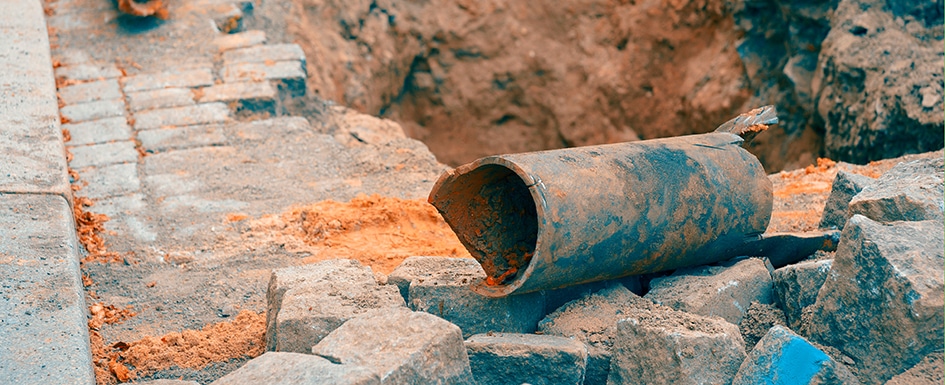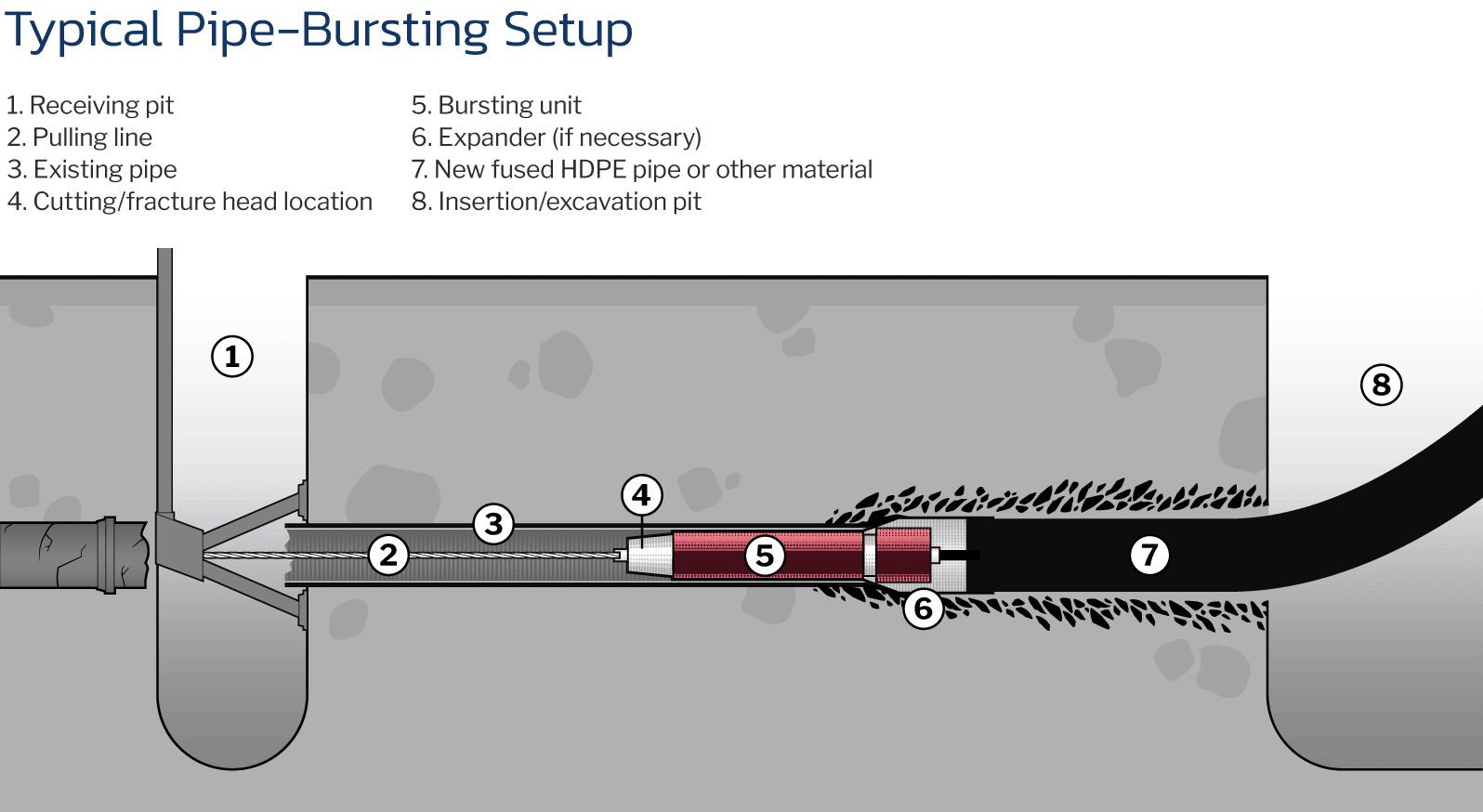

Is Pipe Bursting the Right Trenchless Method for Your Project?
By Mike Kynett, PE
Open-cut utility replacements can be time-consuming, disruptive to the public, and expensive, depending on surface restoration requirements. Deep replacements can be exceptionally costly and technically challenging to complete. Crowded utility corridors add additional challenges and safety concerns. That’s why some municipalities or utility owners choose to use trenchless replacement methods rather than open-cut replacements. Pipe bursting is a trenchless alternative that may work well for your next project. Here are some things to know about pipe bursting that may help you decide if this method suits your project.
How Pipe Bursting is Done
Pipe bursting can be done in several ways, but the existing pipe is typically split and broken using a cutting or fracture device pulled through the pipe. At the same time, a new pipe is brought in behind the cutting/fracture head and replaces the existing pipe. Generally, the new pipe material is fused HDPE or PVC, but other materials can be considered to meet the utility owner’s needs and preferences.
The existing pipe material generally determines which pipe bursting techniques can be used and if pipe bursting is viable. For example, materials like ductile iron and reinforced concrete can be challenging to replace using the pipe-bursting method.
Advantages of Pipe Bursting
The main advantage of pipe bursting versus other trenchless replacement alternatives is the ability to upsize the existing pipe by one to two pipe sizes depending on soil conditions. This flexibility allows a utility owner to increase the flow capacity previously seen in the existing pipeline during the replacement process by installing a larger diameter pipe. Soil conditions need to be evaluated early in the planning phase to determine the expansion available for the new pipe and whether pipe bursting can be used to replace the existing pipe.
Another advantage is that pipe bursting can reduce the amount of surface restoration required and installation duration compared to an open-cut replacement method when successfully implemented.
Pipe Bursting Requirements and Limitations
Although small sags, pipe offsets, and alignment errors in the existing pipe can be corrected using the pipe bursting method, more prevalent defects found in the pipe or generally flat grades associated with the existing pipe cannot be repaired with the pipe bursting method. In these instances and the following situations, an open-cut replacement will most likely be your only solution:
- Service connections and fittings on an existing pipeline must also be excavated and replaced using an open-cut method.
- A pipeline with numerous services and/or fittings might not be feasible or cost-effective to replace using the pipe bursting method. Other trenchless methods or an open-cut replacement may need to be considered in these cases.
The pipe bursting method usually requires excavating an insertion pit and a receiving pit on either end of the replacement section. Keep in mind that existing manholes can sometimes be used for the receiving pit, which reduces the excavation needed.
In these cases, the locations and size requirements for these pits should be evaluated early in the planning phase to determine feasibility.
Read to learn more?


